“The War is going to be won by inventions,” wrote British Admiral Jacky Fisher in 1915. The World War I was that war. New weapons and technology were introduced, no small thanks to advances in radio technology, electrical power, and other latest technological advancement — greatly increasing the casualties of war in both the military and the civilian populations.
As the war raged on, the Germans shelled Paris for the first time with powerful long-range (60 miles or 100 kilometers) guns. London was bombed from the air for the first time by zeppelins.
American soldiers using a newly-developed acoustic locator, mounted on a wheeled platform. The large horns amplified distant sounds, monitored through headphones worn by a crew member, who could direct the platform to move and pinpoint distant enemy aircraft. The acoustic locator was later surpassed by the invention of radar in the 1940s.
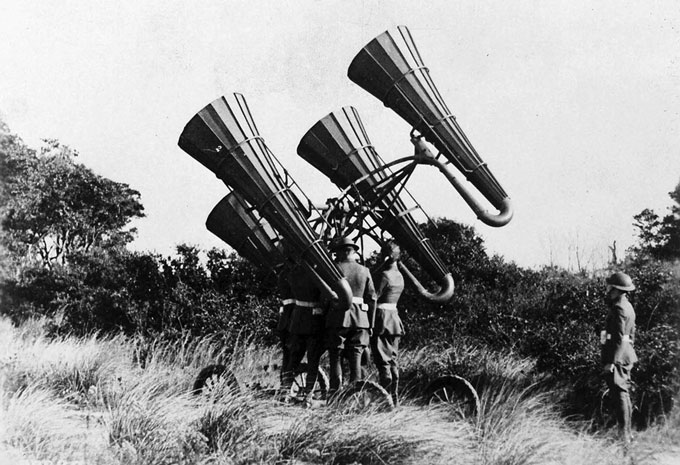
Photo credit: National Archives / Library of Congress / Official German Photograph of WWI
An Austrian armored train in Galicia. Adding armor to trains dates back to the American Civil War, used as a way to safely move weapons and troops through hostile territory (1915)
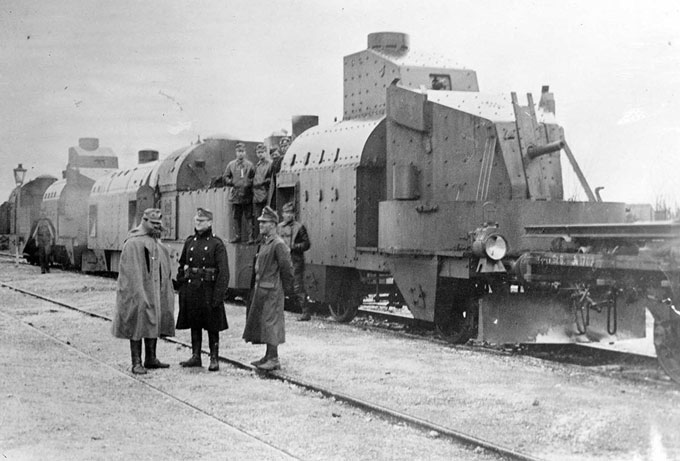
Photo credit: National Archives / Library of Congress / Official German Photograph of WWI
The interior of an armored train car, Chaplino, Dnipropetrovs’ka oblast, Ukraine, with at least 9 heavy machine guns and ammunition cases (1918)
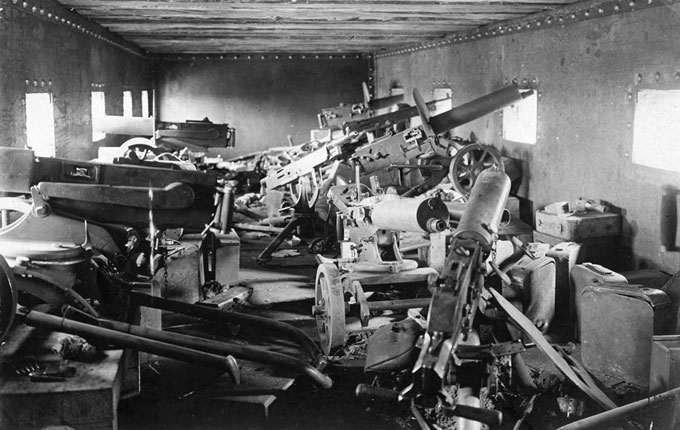
Photo credit: National Archives / Library of Congress / Official German Photograph of WWI
A German communications personnel in the Western front, using a bicycle-powered generator to power a light radio station (1917)
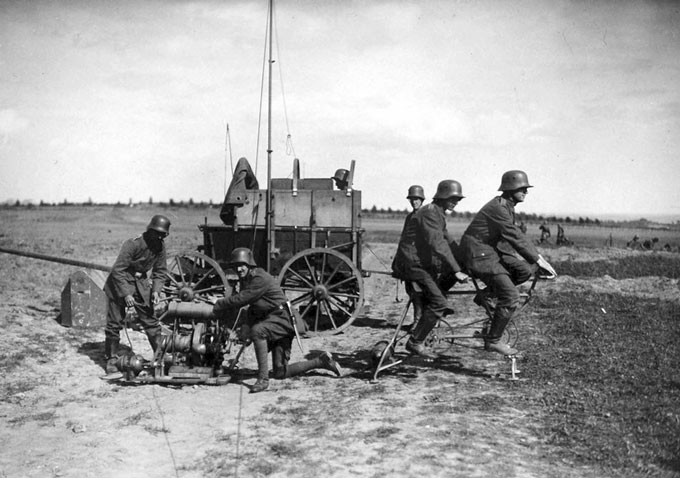
Photo credit: National Archives / Library of Congress / Official German Photograph of WWI
Allied forces advancing on Bapaume, France (1917)
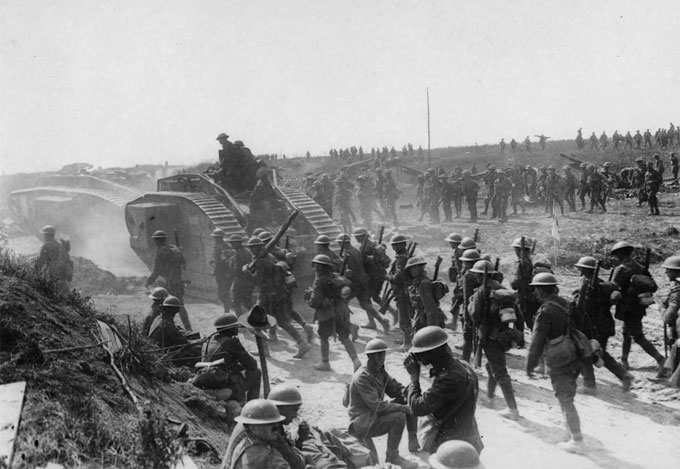
Photo credit: National Archives / Library of Congress / Official German Photograph of WWI
Soldier on a U.S. Harley-Davidson motorcycle. During the last years of the war, the United States deployed more than 20,000 Indian and Harley-Davidson motorcycles overseas (1918)
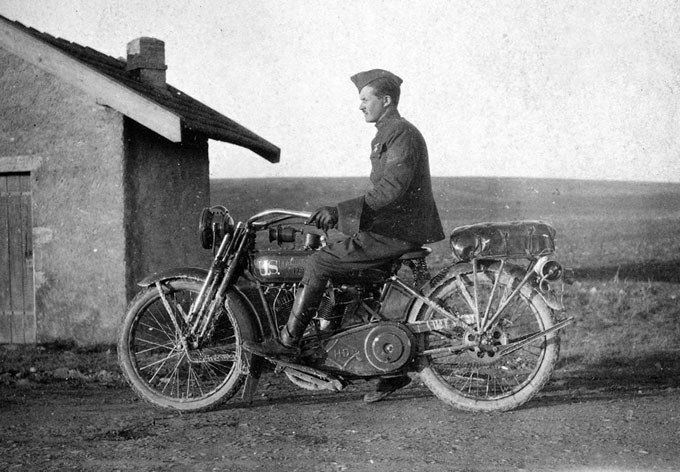
Photo credit: National Archives / Library of Congress / Official German Photograph of WWI
British Medium Mark A Whippet tanks, which were faster and lighter than the previously deployed British heavy tanks, advancing past the body of a dead soldier, moving to an attack along a road near Achiet-le-Petit, France (1918)
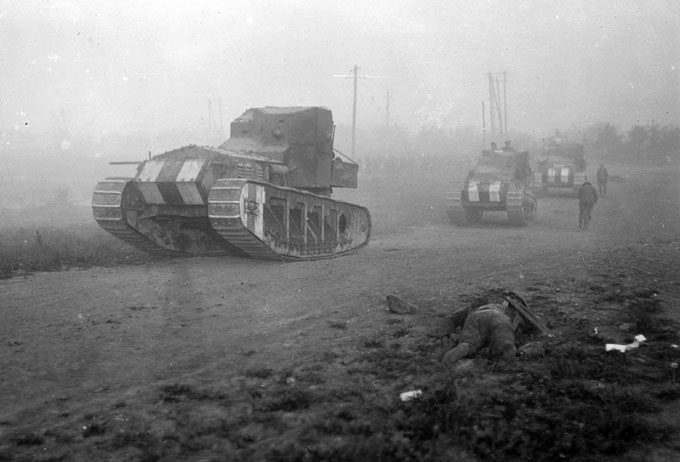
Photo credit: National Archives / Library of Congress / Official German Photograph of WWI
German soldier rubbing down massive shells for the 38 cm SK L/45, or “Langer Max” rapid firing railroad gun. The Langer Max was originally designed as a battleship weapon, later mounted to armored rail cars. It could fire a 750 kg high explosive projectile up to 34,200 meters (1918).
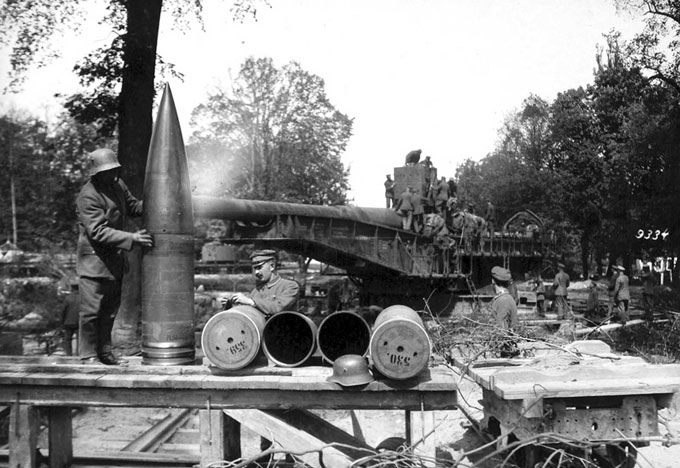
Photo credit: National Archives / Library of Congress / Official German Photograph of WWI
German infantrymen from Infanterie-Regiment Vogel von Falkenstein Nr.56 in a communication trench wearing gas masks and Stahlhelm helmets or stirnpanzer, which was a heavy steel plate used for protection from snipers and raiding parties
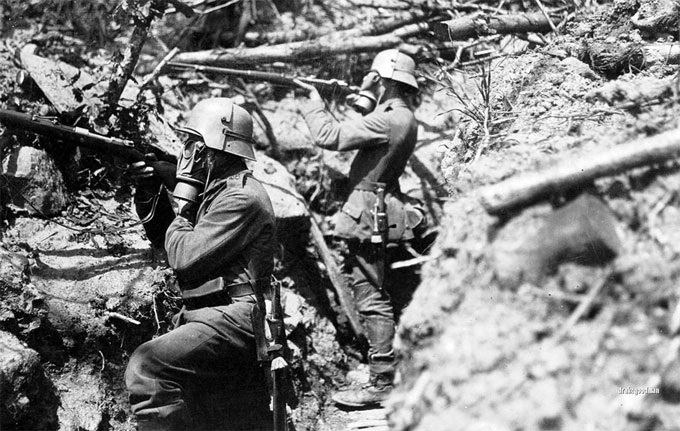
Photo credit: National Archives / Library of Congress / Official German Photograph of WWI
A false tree, a type of disguised observation post used by both sides
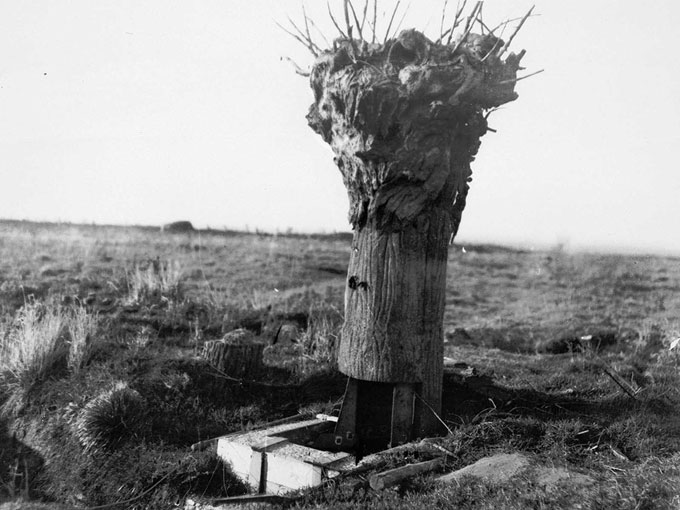
Photo credit: National Archives / Library of Congress / Official German Photograph of WWI
Turkish troops using a heliograph at Huj, near Aza City, in 1917. A heliograph is a wireless solar telegraph that signals by flashes of sunlight usually using Morse code, reflected by a mirror.
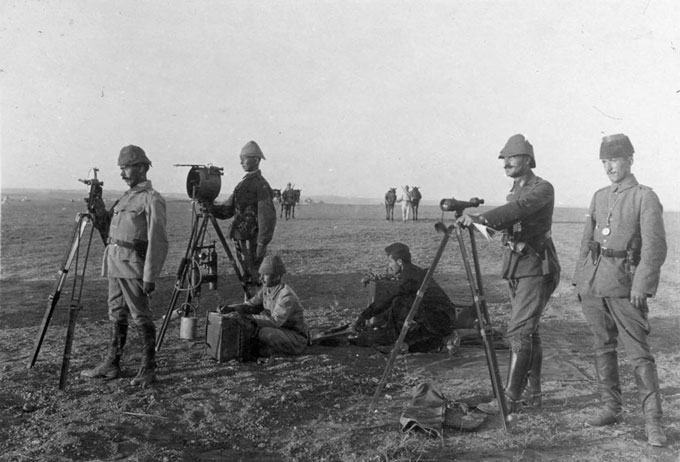
Photo credit: National Archives / Library of Congress / Official German Photograph of WWI
A Red Cross vehicle designed to protect the wounded while gathering them from trenches during World War I (1915)
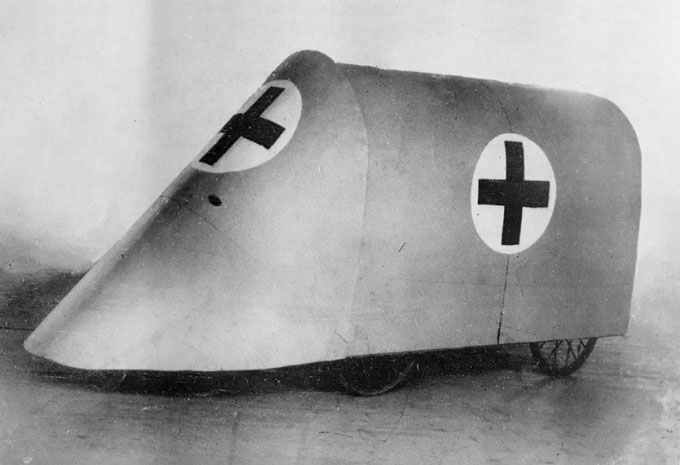
Photo credit: National Archives / Library of Congress / Official German Photograph of WWI
U.S. soldiers wearing gas masks. Behind them is a signal rocket appears to be in mid-launch. When gas attacks were detected, alarms used included gongs and signal rockets.
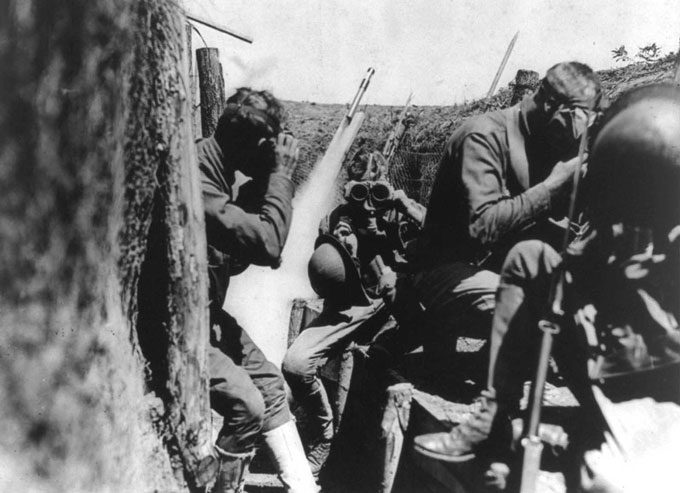
Photo credit: National Archives / Library of Congress / Official German Photograph of WWI
A German trench-digging machine (1918)
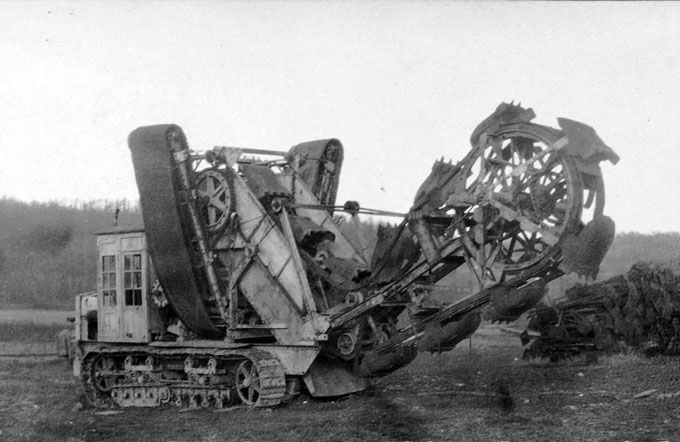
Photo credit: National Archives / Library of Congress / Official German Photograph of WWI
A German soldier communicating using a field telephone to his head
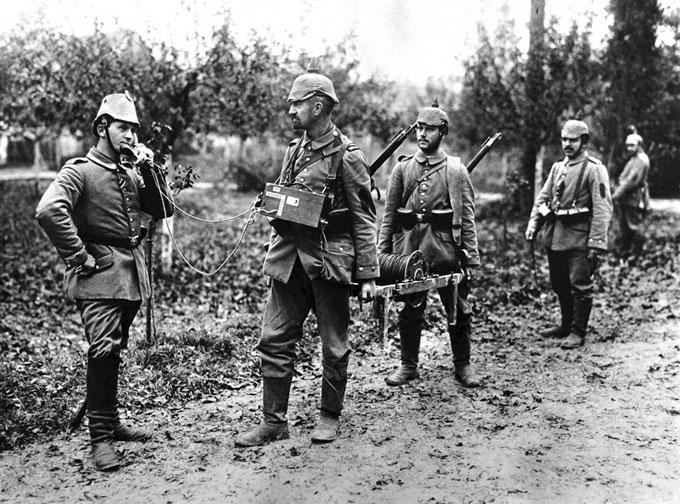
Photo credit: National Archives / Library of Congress / Official German Photograph of WWI
Loading a German A7V tank onto a railroad flat car
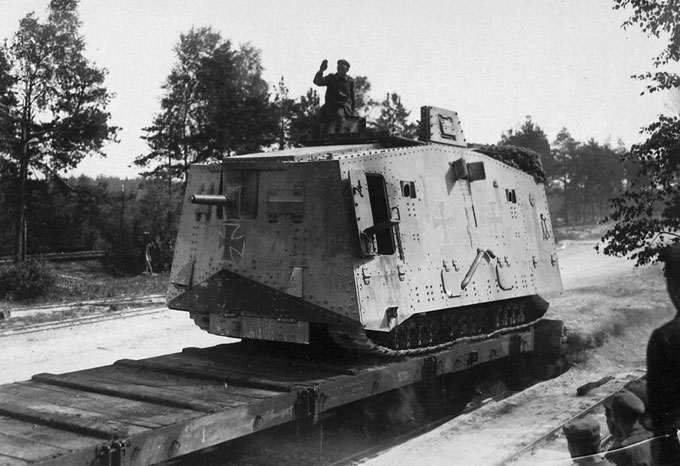
Photo credit: National Archives / Library of Congress / Official German Photograph of WWI
False horses, camouflage to allow snipers a place to hide
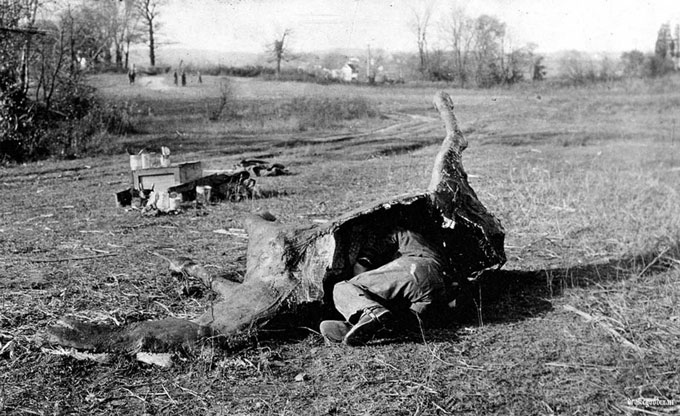
Photo credit: National Archives / Library of Congress / Official German Photograph of WWI
Women working in the welding Department of the Lincoln Motor Co., in Detroit, Michigan (1918)
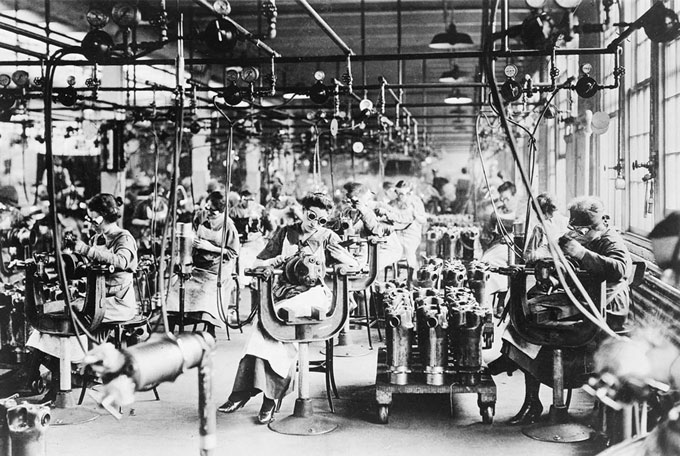
Photo credit: National Archives / Library of Congress / Official German Photograph of WWI
A duel between a tank and a flamethrower (1918)
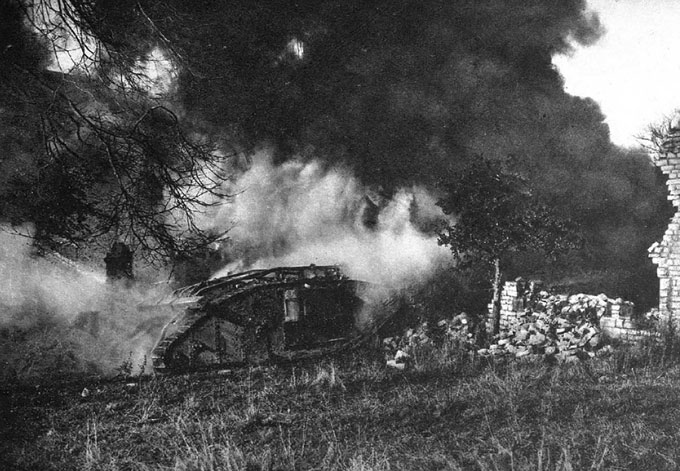
Photo credit: National Archives / Library of Congress / Official German Photograph of WWI
Derelict tanks lie strewn about a chaotic battlefield at Clapham Junction, Ypres, Belgium (1918)
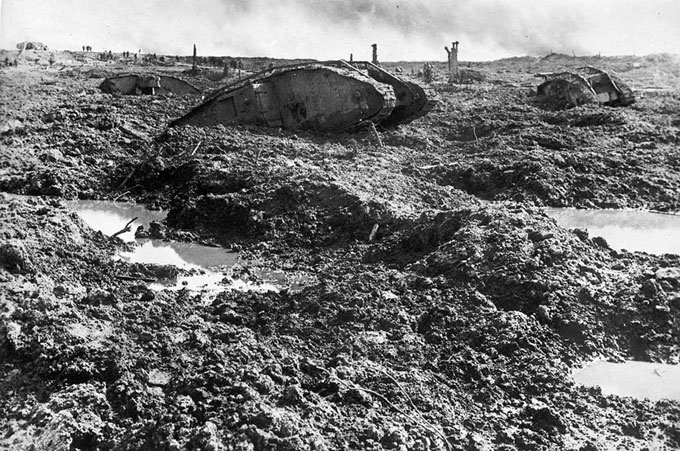
Photo credit: National Archives / Library of Congress / Official German Photograph of WWI
Gas masks in use in Mesopotamia (1918)
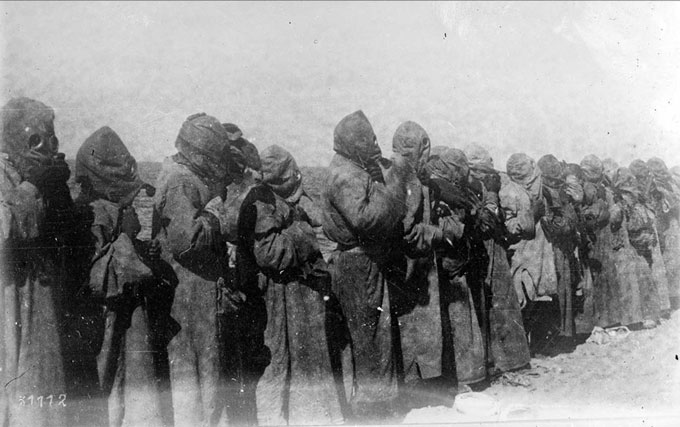
Photo credit: National Archives / Library of Congress / Official German Photograph of WWI
Americans setting up a French 37mm gun known as a “one-pounder” on the parapet of a second-line trench at Dieffmattch, Alsace, France, where their command, the 126th Infantry, was located (1918)
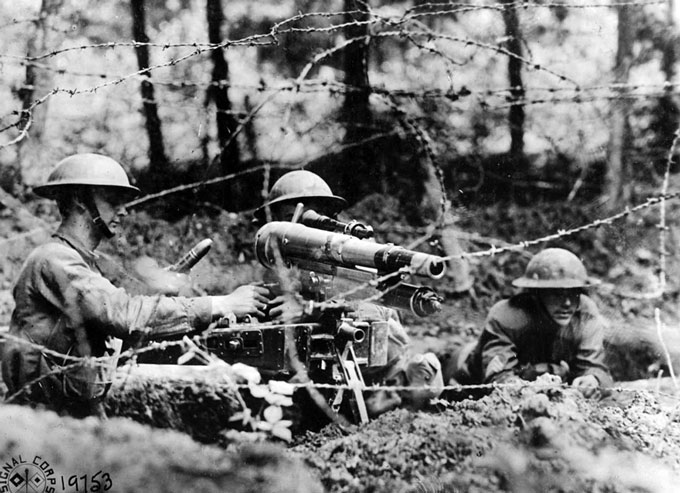
Photo credit: National Archives / Library of Congress / Official German Photograph of WWI
American troops aboard French Renault FT-17 tanks heading for the front line in the Forest of Argonne, France (1918)
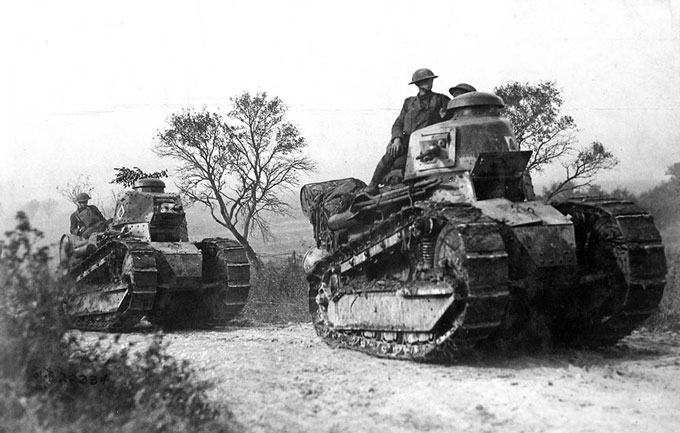
Photo credit: National Archives / Library of Congress / Official German Photograph of WWI
A German aviator’s suit equipped with electrically heated face mask, vest, and fur boots. Open cockpit flight meant pilots had to endure sub-freezing conditions
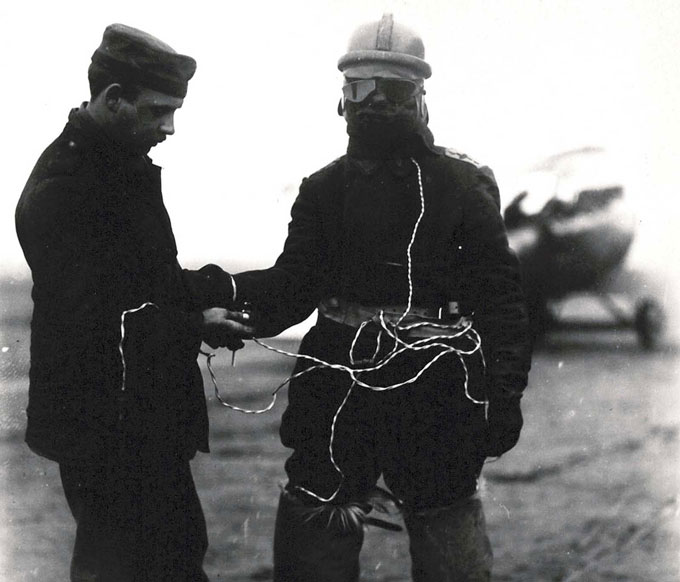
Photo credit: National Archives / Library of Congress / Official German Photograph of WWI
British Mark I tank flanked by infantry soldiers, mules and horses.
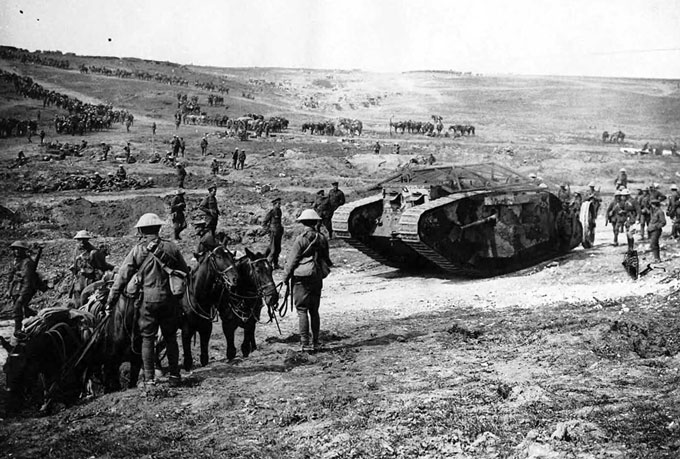
Photo credit: National Archives / Library of Congress / Official German Photograph of WWI
Turkish artillery squad at Harcira, in 1917. Turkish troops with a German 105 mm light field howitzer M98/09
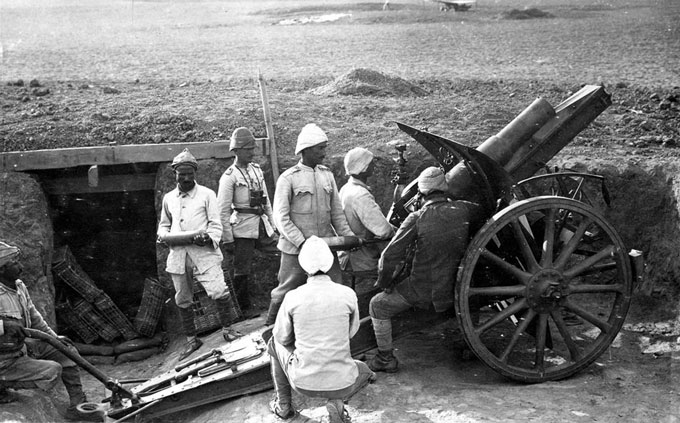
Photo credit: National Archives / Library of Congress / Official German Photograph of WWI
Irish Guards line up for a gas mask drill on the Somme (1916)
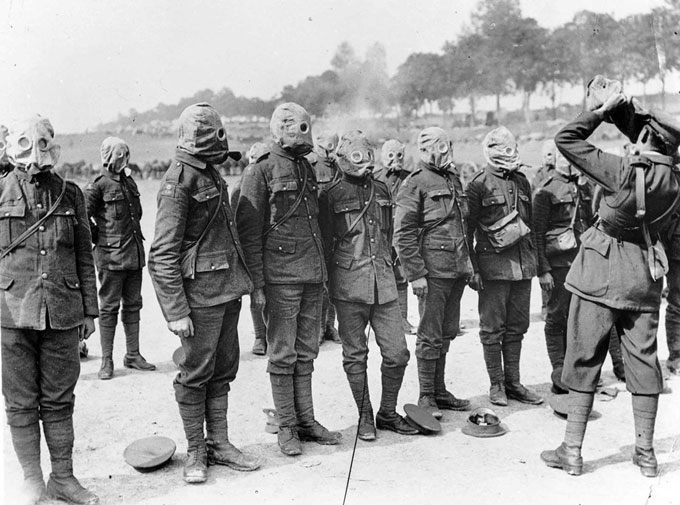
Photo credit: National Archives / Library of Congress / Official German Photograph of WWI
The Holt gas-electric tank, the first American tank, in 1917. The Holt did not get beyond the prototype stage, proving too heavy and inefficient for actual combat
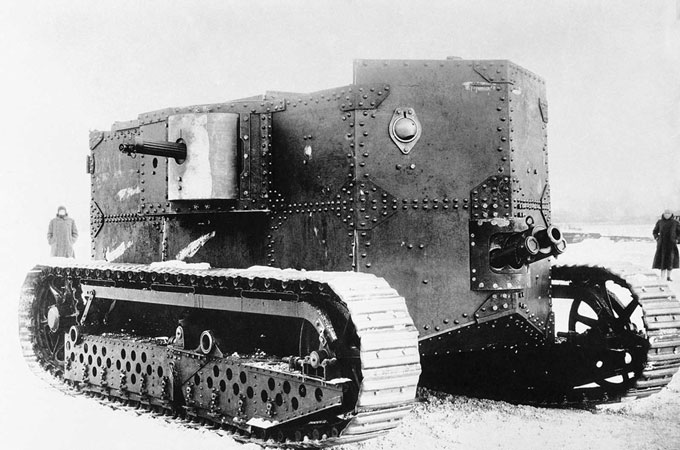
Photo credit: National Archives / Library of Congress / Official German Photograph of WWI
Wooden temporary bridge built on top of a destroyed steel bridge. An English tank that fell in the river now serves as part of the foundation for the new bridge over the Scheldt at Masnieres
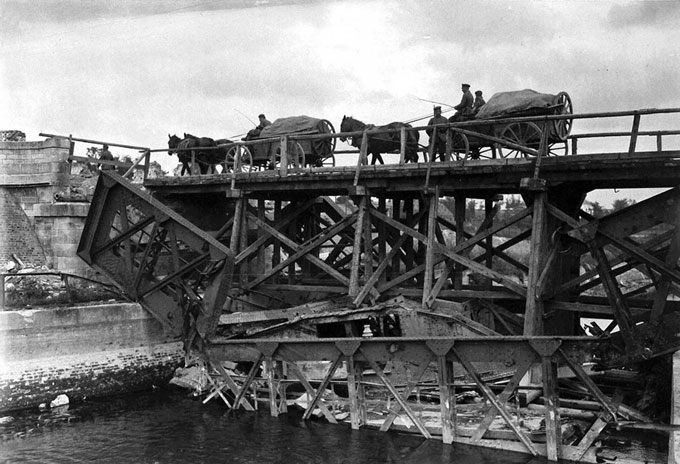
Photo credit: National Archives / Library of Congress / Official German Photograph of WWI
Telegraph office at Elysee Palace Hotel, Paris, France, with Major R.P. Wheat in charge (1918)
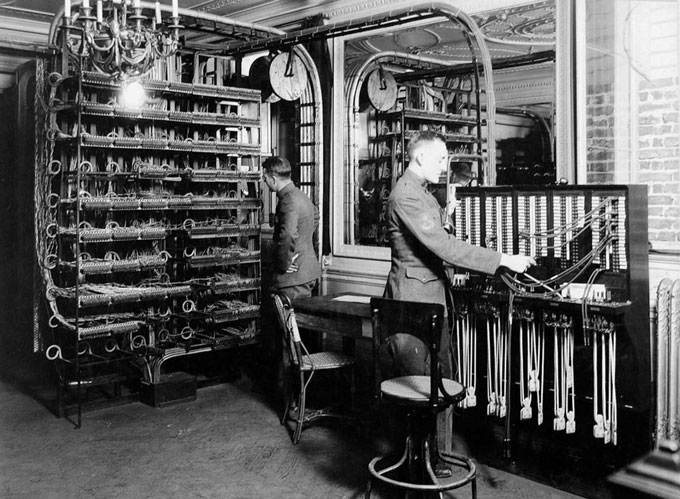
Photo credit: National Archives / Library of Congress / Official German Photograph of WWI
German officers with an armored car, Ukraine (1918)
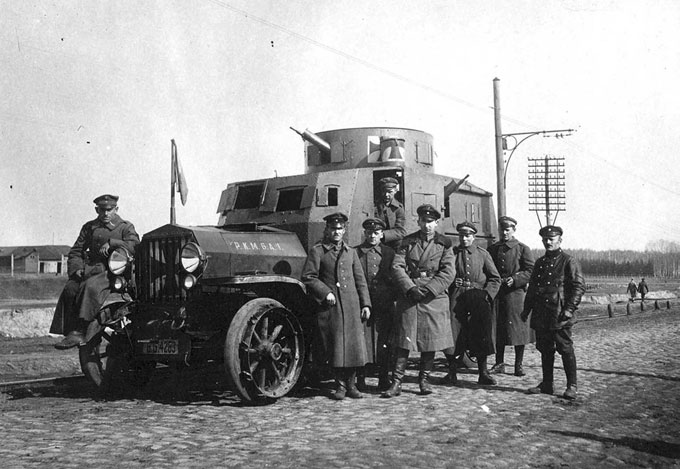
Photo credit: National Archives / Library of Congress / Official German Photograph of WWI
Members of the 69th Australian Squadron fixing incendiary bombs to an R.E.8 aircraft at the AFC airfield north west of Arras (1917)
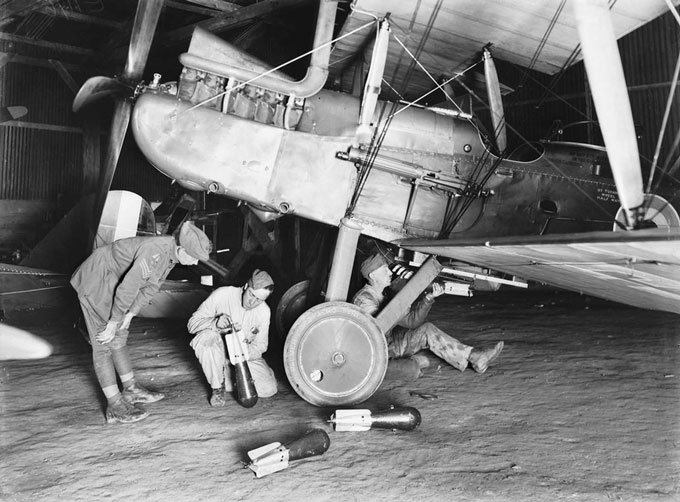
Photo credit: National Archives / Library of Congress / Official German Photograph of WWI
8 machine-gun crews are ready to set out on a sortie in France. Each crew consists of 2 men, the driver on a motorbike and the gunner sitting in an armored sidecar (1918)
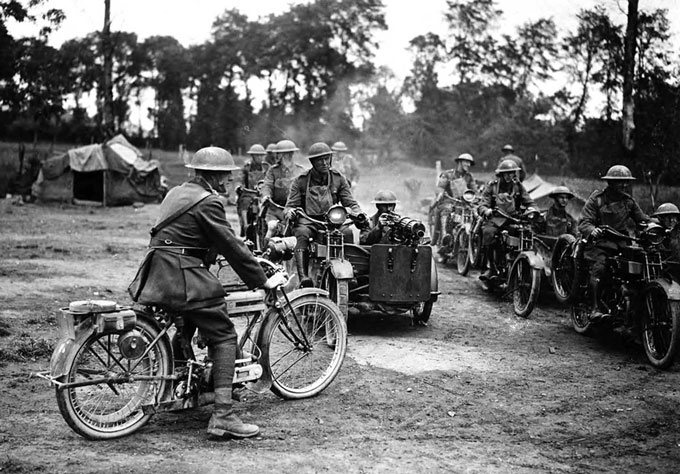
Photo credit: National Archives / Library of Congress / Official German Photograph of WWI
New Zealand troops and the tank “Jumping Jennie” in a trench at Gommecourt Wood, France (1918)
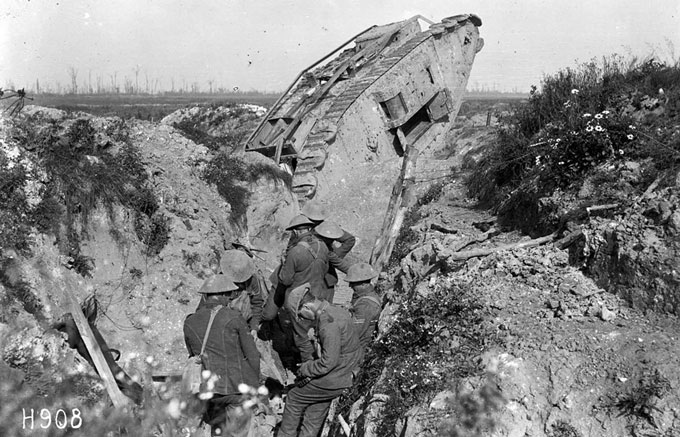
Photo credit: National Archives / Library of Congress / Official German Photograph of WWI
German troops looking over a destroyed Canadian Armored car with dead bodies of Canadian soldiers
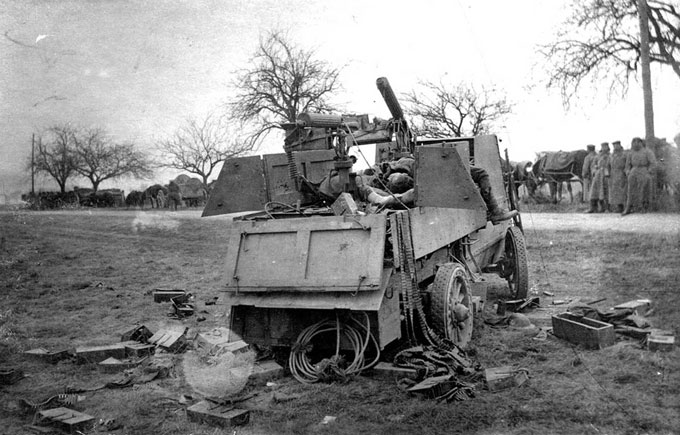
Photo credit: National Archives / Library of Congress / Official German Photograph of WWI
U.S. Soldiers in training, about to enter a tear gas trench at Camp Dix, New Jersey (1918)
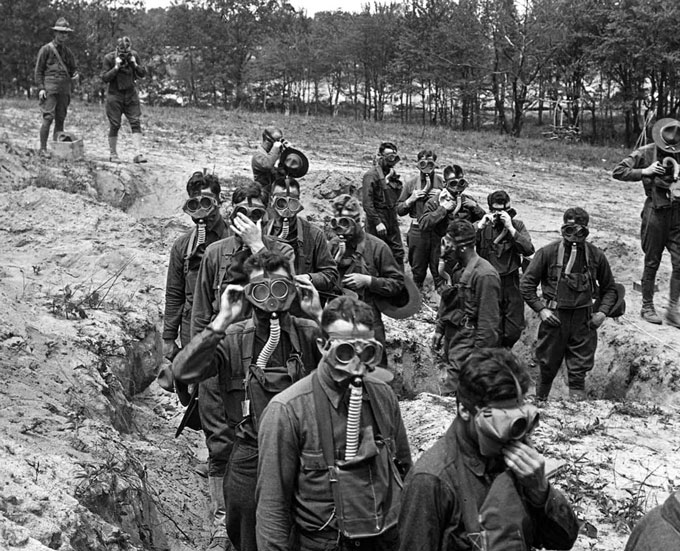
Photo credit: National Archives / Library of Congress / Official German Photograph of WWI
German troops loading gas projectors. Attempting to exploit a loophole in international laws against the uses of gas in warfare, some German officials noted that only gas projectiles appeared to be specifically banned, and that no prohibition could be found against simply releasing deadly chemical weapons and allowing the wind to carry it to the enemy
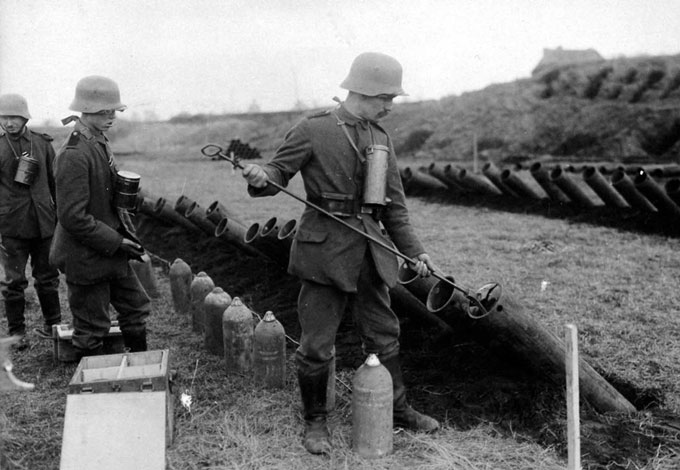
Photo credit: National Archives / Library of Congress / Official German Photograph of WWI
Flanders front, gas attack (1917)
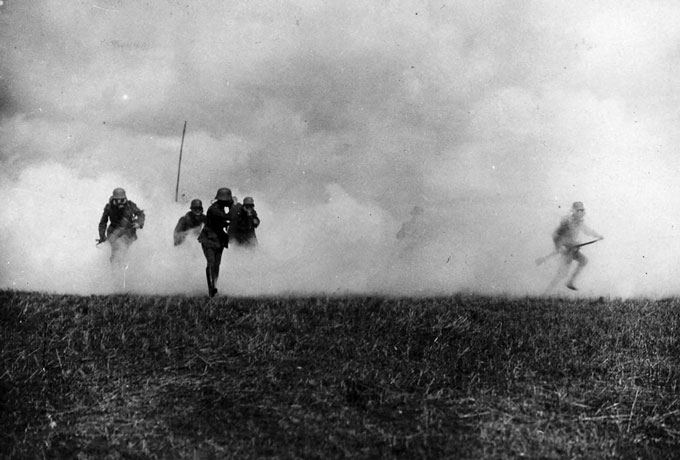
Photo credit: National Archives / Library of Congress / Official German Photograph of WWI
French lookouts posted in a barbed-wire-covered trench. The use of barbed wire in warfare was recent, having only been used for the first time in limited form during the Spanish-American War. All sides in World War I used extensive networks of barbed wire entanglements to prevent ground troops from moving forward. The effectiveness of the wire drove the development of technologies like the tank, and wire-cutting explosive shells set to detonate the instant they made contact with a wire
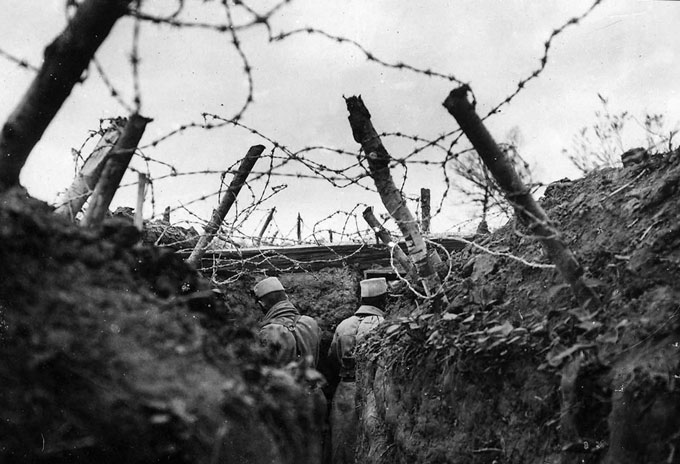
Photo credit: National Archives / Library of Congress / Official German Photograph of WWI
American and French photographers, France (1917)
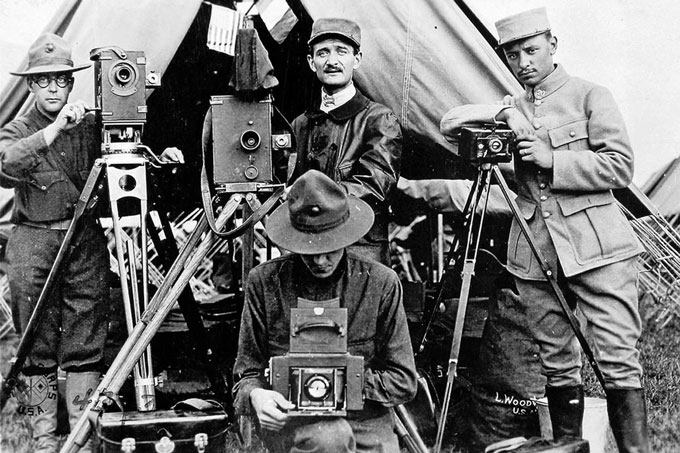
Photo credit: National Archives / Library of Congress / Official German Photograph of WWI
“The Italian collapse in Venezia. The heedless flight of the Italians to the Tagliamento. Captured heavy and gigantic cannon in a village behind Udine. November 1917”. Showed in the picture is an Obice da 305/17, a huge Italian howitzer, one of fewer than 50 produced during the war.
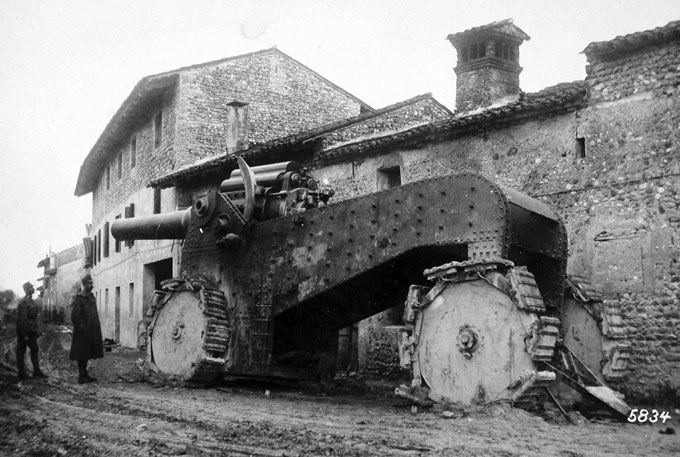
Photo credit: National Archives / Library of Congress / Official German Photograph of WWI
Western front, Flammenwerfers (flame throwers) in use
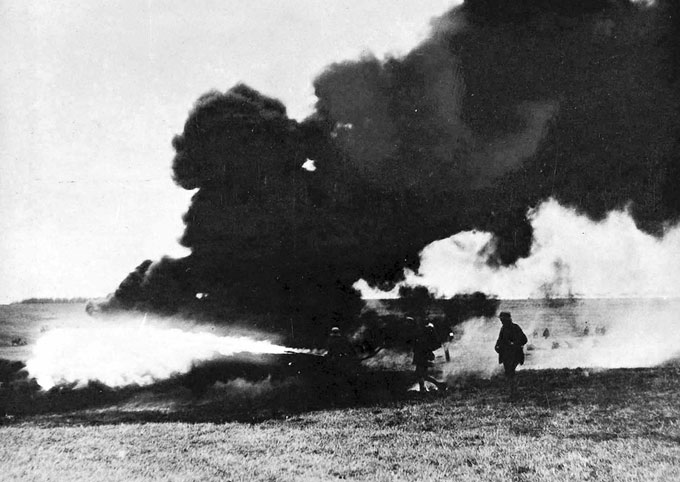
Photo credit: National Archives / Library of Congress / Official German Photograph of WWI
A patient is examined in a mobile radiology lab, belonging to the French Army (1914)
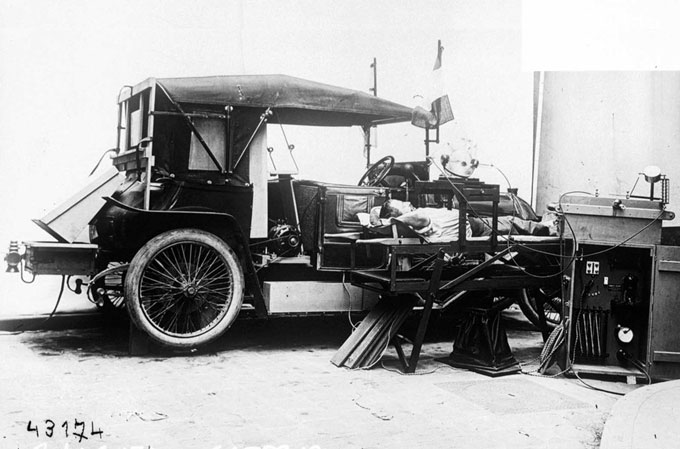
Photo credit: National Archives / Library of Congress / Official German Photograph of WWI
British-made Mark IV tank, captured and re-painted by Germans, now abandoned in a small wood
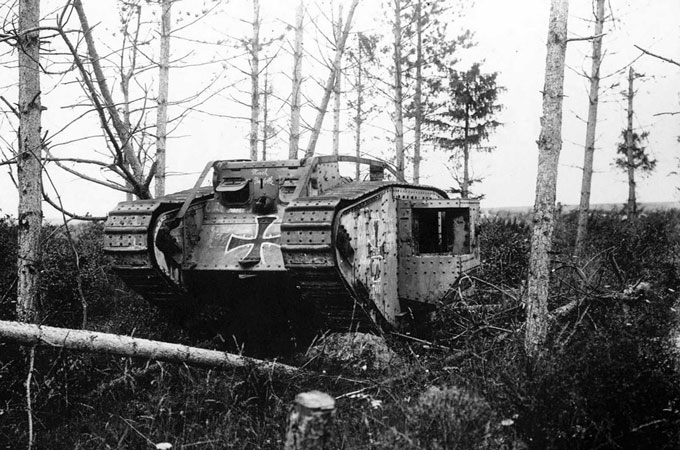
Photo credit: National Archives / Library of Congress / Official German Photograph of WWI
